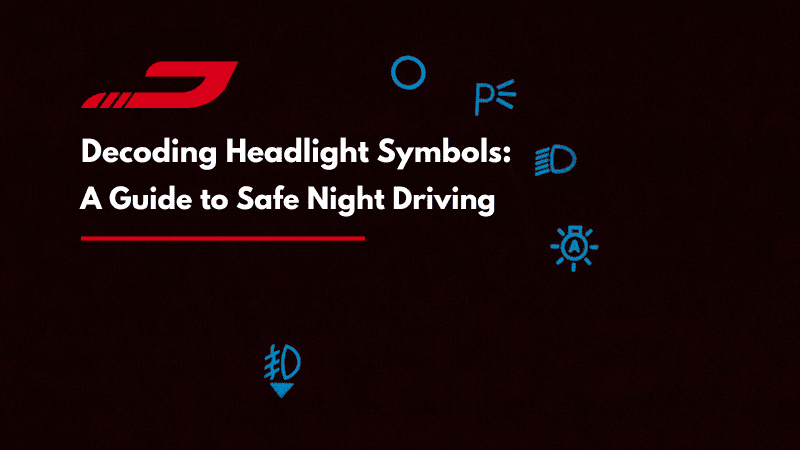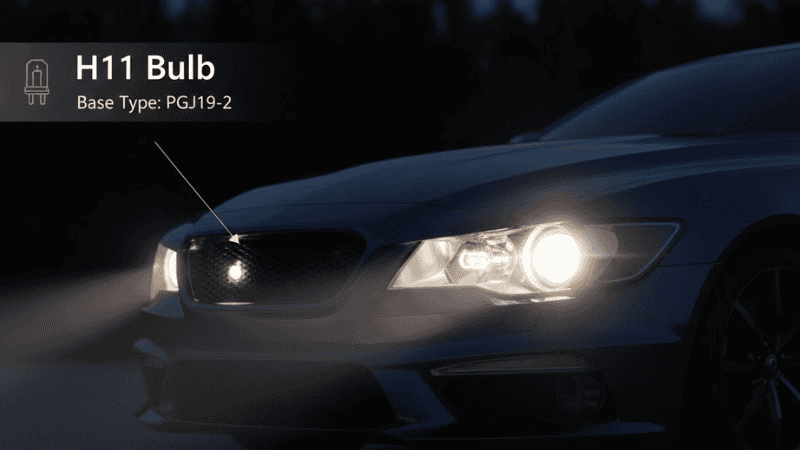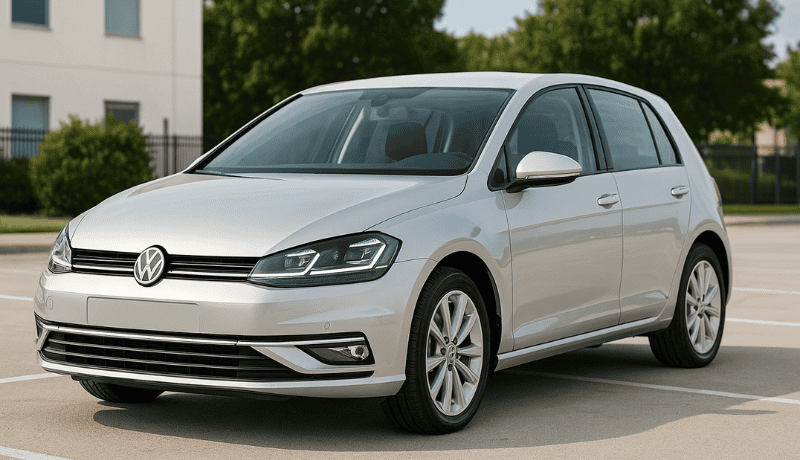The complexities of headlight symbols can be challenging for new drivers or those unfamiliar with the array of features in modern vehicles. Understanding these symbols is essential for safe driving, especially at night or in adverse weather conditions.
Each symbol on your dashboard corresponds to a specific lighting function, from low beams and high beams to fog lights and daytime running lights, each designed to optimize visibility and safety on the road.
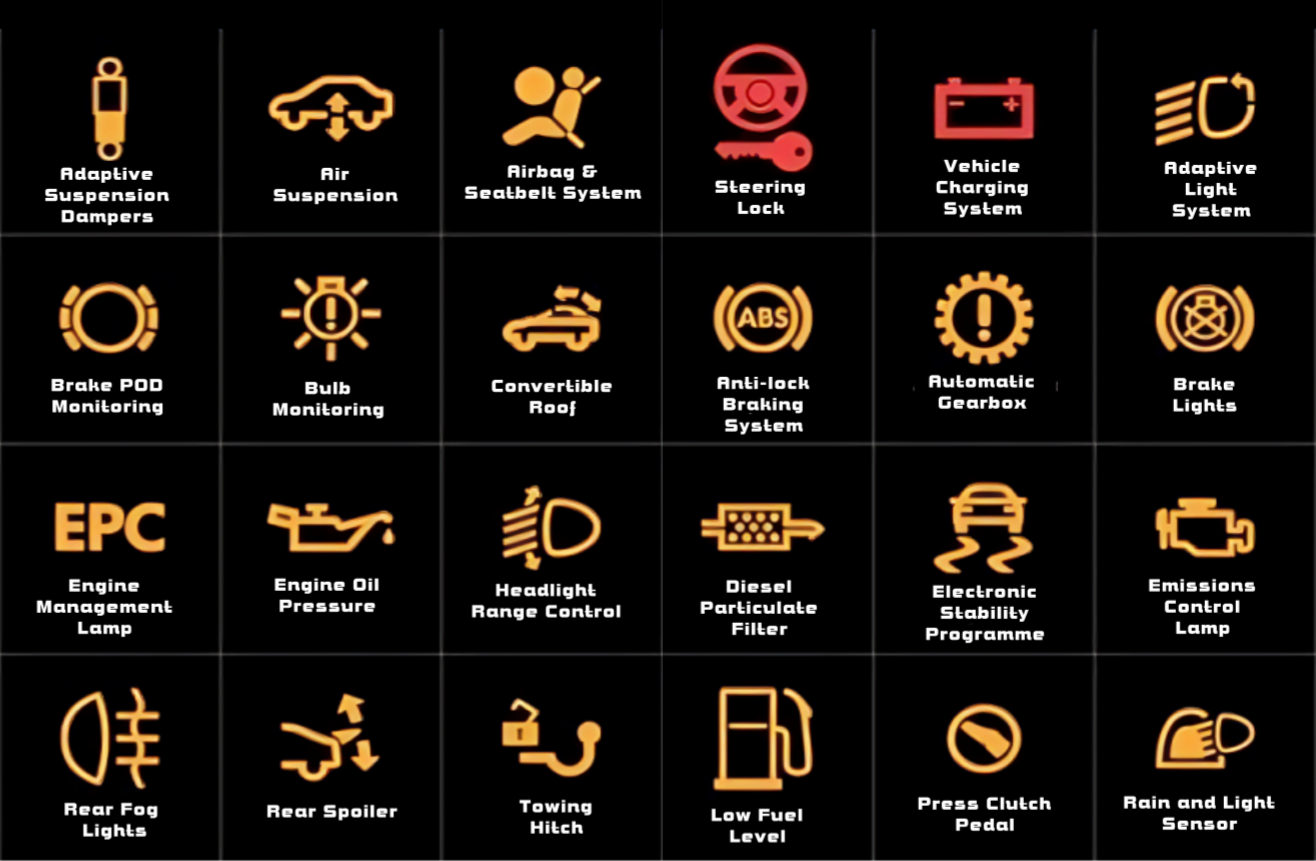
Automotive lighting and corresponding symbols regulate the world of driving. Understanding these symbols and knowing when to use each type of lighting is essential for any driver.
This guide will help demystify some of these headlight symbols, equipping you with the knowledge needed to confidently and correctly use your vehicle’s lighting features.
Whether you’re navigating through a busy city at night or driving down a secluded rural road, mastering these symbols will ensure you maintain optimal visibility and safety.
Common Car Headlight Symbols and Their Meanings
Car dashboards use a set of standardized car headlight symbols to show which lights are currently active. These headlight symbol meanings help drivers quickly understand their car’s light settings, especially when driving at night or in poor weather.
Below is a clear explanation of the most common headlight symbols in a car, what each headlight symbol looks like, and when to use them correctly.
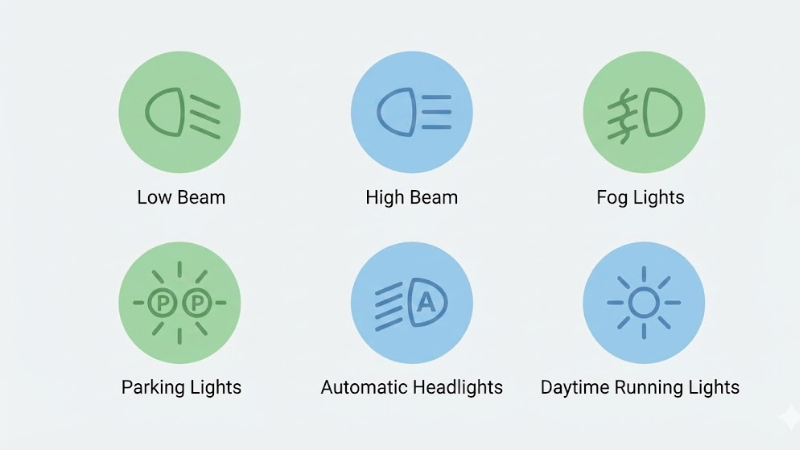
What Do the Different Headlight Symbols Mean?
Car dashboards display a variety of car headlight symbols, each representing a specific lighting mode. These headlight symbol meanings tell you whether your low beams, high beams, fog lights, or automatic headlights are active.
Understanding what the headlight symbols mean helps drivers quickly adjust their car light settings, especially at night, in fog, or during poor weather conditions. Below, we explain the most common headlight symbols in a car, using clear descriptions that match what you see on the dashboard.
What Are the Different Headlight Functions?
Headlights can be controlled through a stalk or a dash-mounted switch. The switch is usually attached to your steering wheel. When you turn a switch, the dashboard indicator light turns on for that light. You can manually turn the lights on or off, or in some vehicles, set them to automatically turn off when the car’s ignition is switched off.
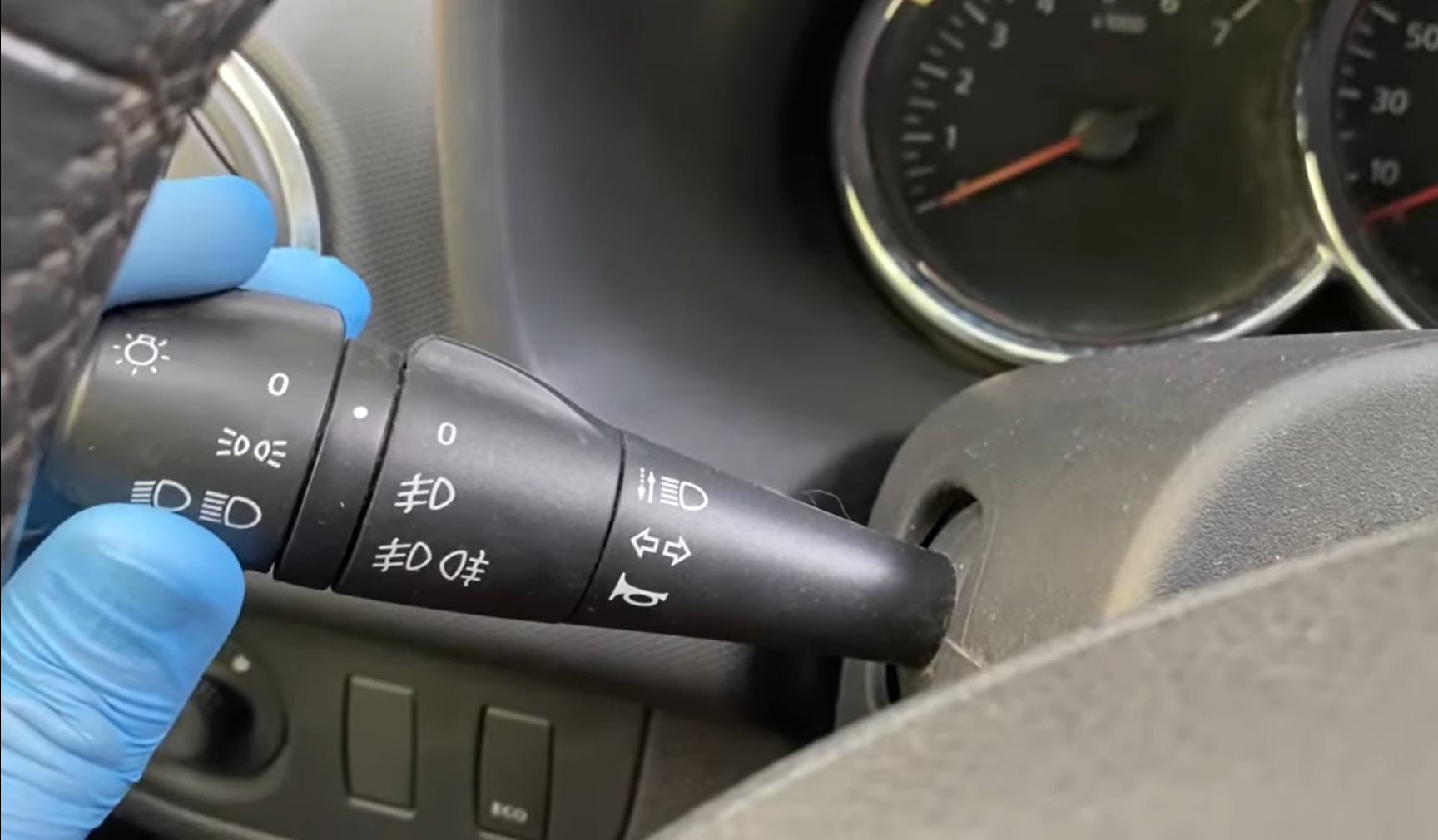
Many modern cars feature automatic headlights that adjust based on ambient light conditions, and some even have a function that automatically dips the high beams when they detect oncoming traffic, preventing glare for other drivers.
But why is it essential? Low beams are used during regular night driving to provide enough light to see the road ahead without blinding oncoming traffic. High beams, on the other hand, are designed for use in dark, rural areas where additional visibility is needed, and there’s no risk of dazzling other drivers.
Similarly, fog lights are crucial in reducing glare and improving visibility in foggy or misty conditions. In contrast, daytime running lights enhance your vehicle’s visibility during the day without the need for full headlights.
Headlight Types Introduction
Headlight Beam Types
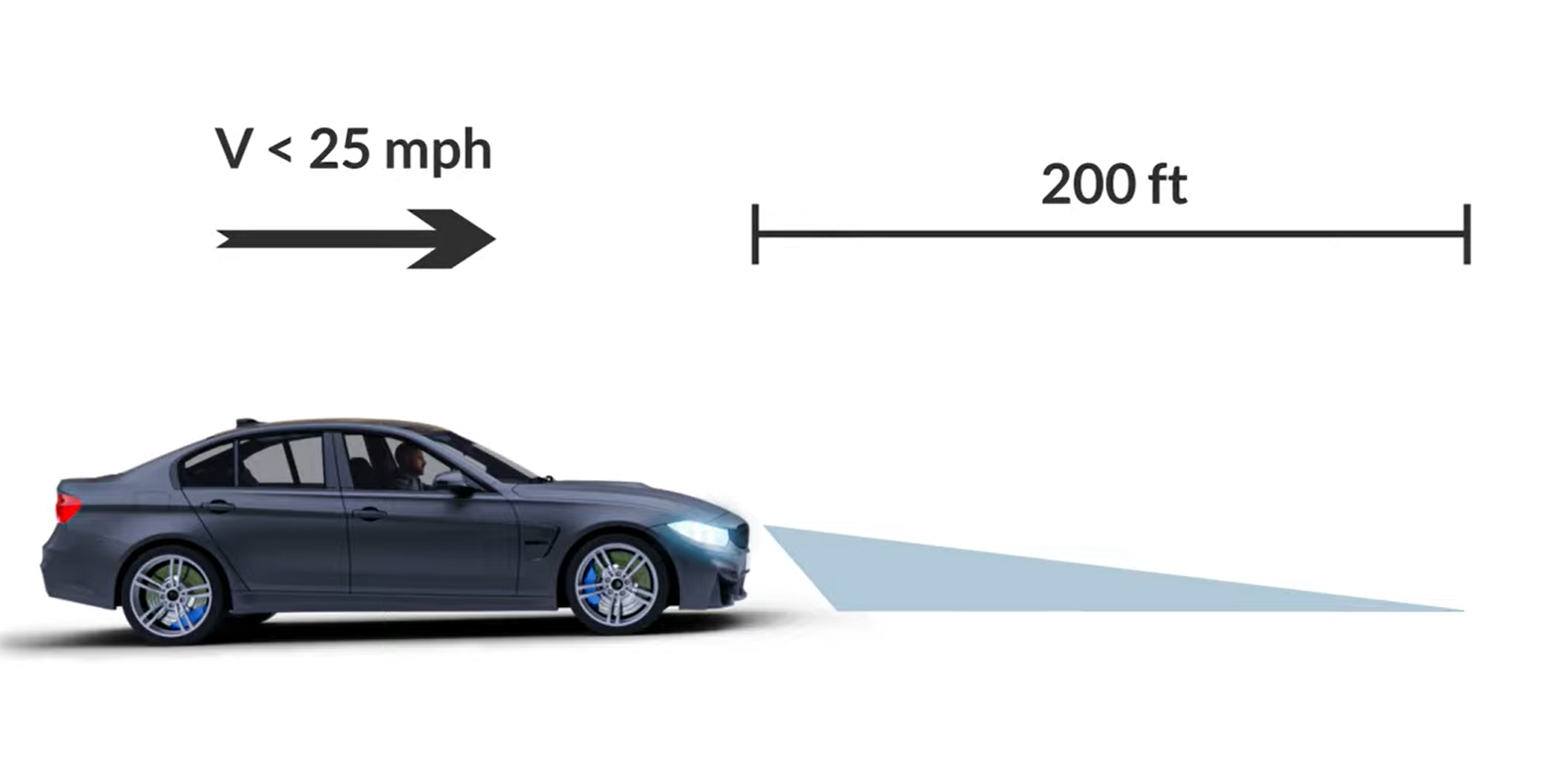
Low Beam Headlights Symbol (Dipped Headlights)
The low beam headlights symbol shows a headlamp with light rays angled downward. This low beam symbol indicates your regular headlights are on.
Low beam headlight symbol meaning:
Low beams are designed for normal night driving without dazzling oncoming traffic. This is the most common headlights symbol on car dashboards and should be used in cities, traffic, rain, or when visibility is reduced.
Dipped Headlights are the most commonly used type of headlights. They are angled downwards to illuminate the road directly in front of the vehicle without blinding oncoming traffic. You can see up to 200 feet in front of you and safely drive below 25 mph. They are ideal for regular night driving and situations where you need to see clearly without causing glare.
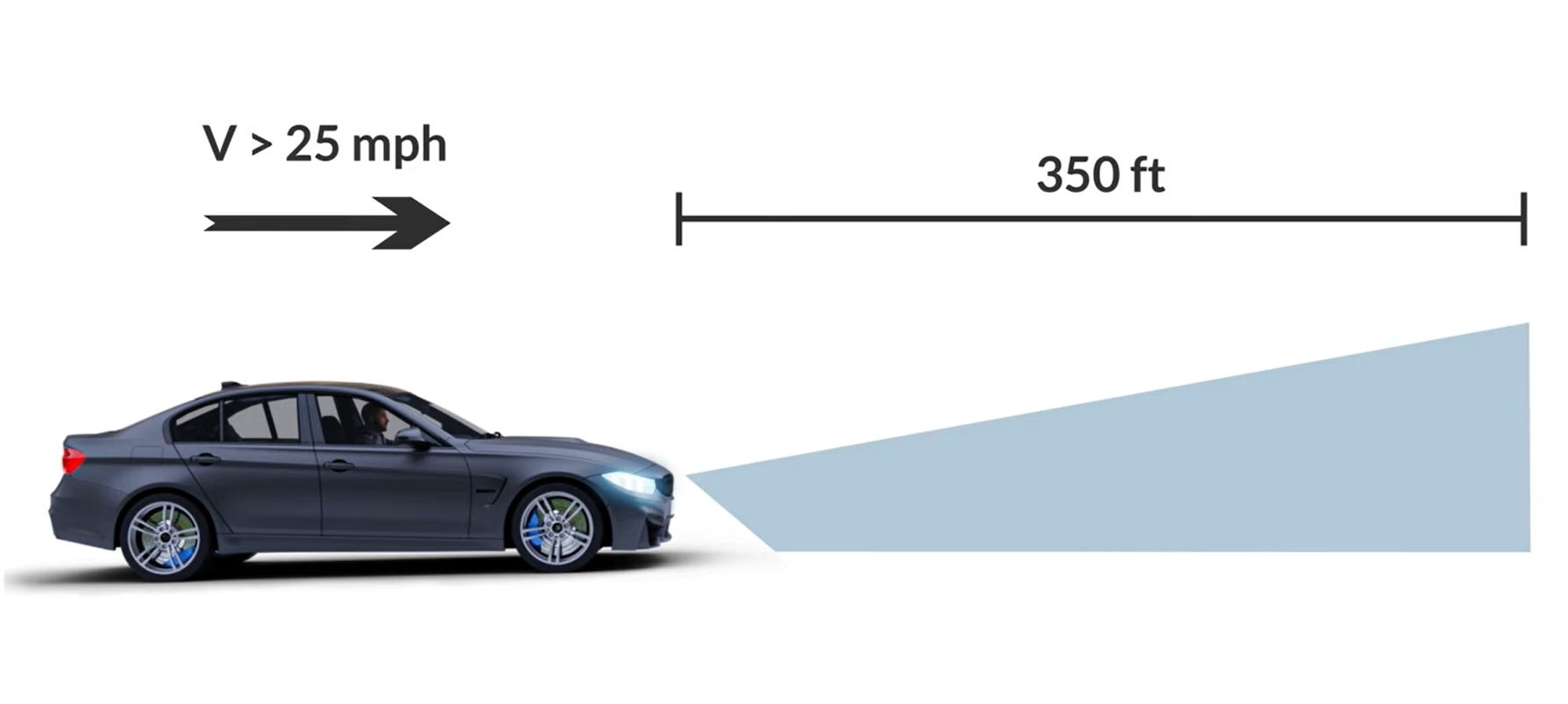
High Beam Symbol (Main Beam / Brights)
The high beam symbol features a headlamp with straight horizontal light lines. This bright car symbol means your high beam headlights are active.
High beams provide maximum visibility on dark, unlit roads. The high beam indicator symbol appears blue to remind drivers to switch back to low beams when other vehicles approach.
Full Beam Headlights are the brightest type of headlights on standard vehicles. They are angled higher than dipped headlights to provide maximum visibility over longer distances, especially on dark, rural roads. You should be able to see up to 350 ft further ahead up the road. However, they should be switched off or lowered when there’s oncoming traffic to avoid dazzling other drivers.

Fog Light Symbol on Car (Front and Rear)
The fog light symbol on car dashboards represents lights designed for poor visibility conditions.
- Front fog light symbol: light beams pointing left with a wavy line
- Rear fog lights symbol: beams pointing right, usually amber or red
Fog lights symbol meaning:
Fog lights reduce glare and improve short-range visibility in fog, snow, or heavy rain. The fog light car symbol should only be used when visibility is seriously reduced.
Fog Lights and Their Uses
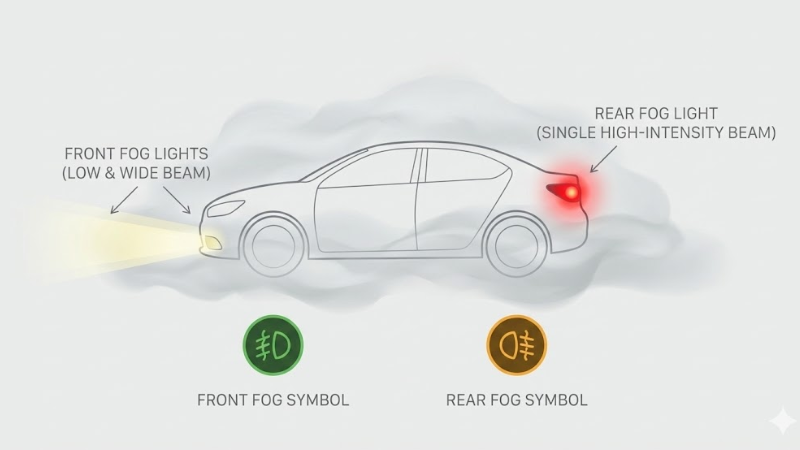
Fog Lights are specifically designed to cut through fog and mist, providing better visibility in poor weather conditions. They are typically operated from a switch on the dashboard and positioned lower on the vehicle to reduce glare and reflectivity. They should only be used in foggy conditions to avoid confusing other drivers.
Fog lights are designed to cut through fog and mist, providing better visibility when conditions are poor. These lights are typically activated from a switch on the dashboard and should only be used when visibility drops below 100 meters.
Using fog lights when visibility is better than 100 meters can dazzle other drivers, which is why it’s essential to use them correctly. The symbol for front fog lights is usually a green light icon shining to the left, with a wavy line through the beam, indicating their specific function for foggy conditions.
Parking Lights and Hazard Warning Lights
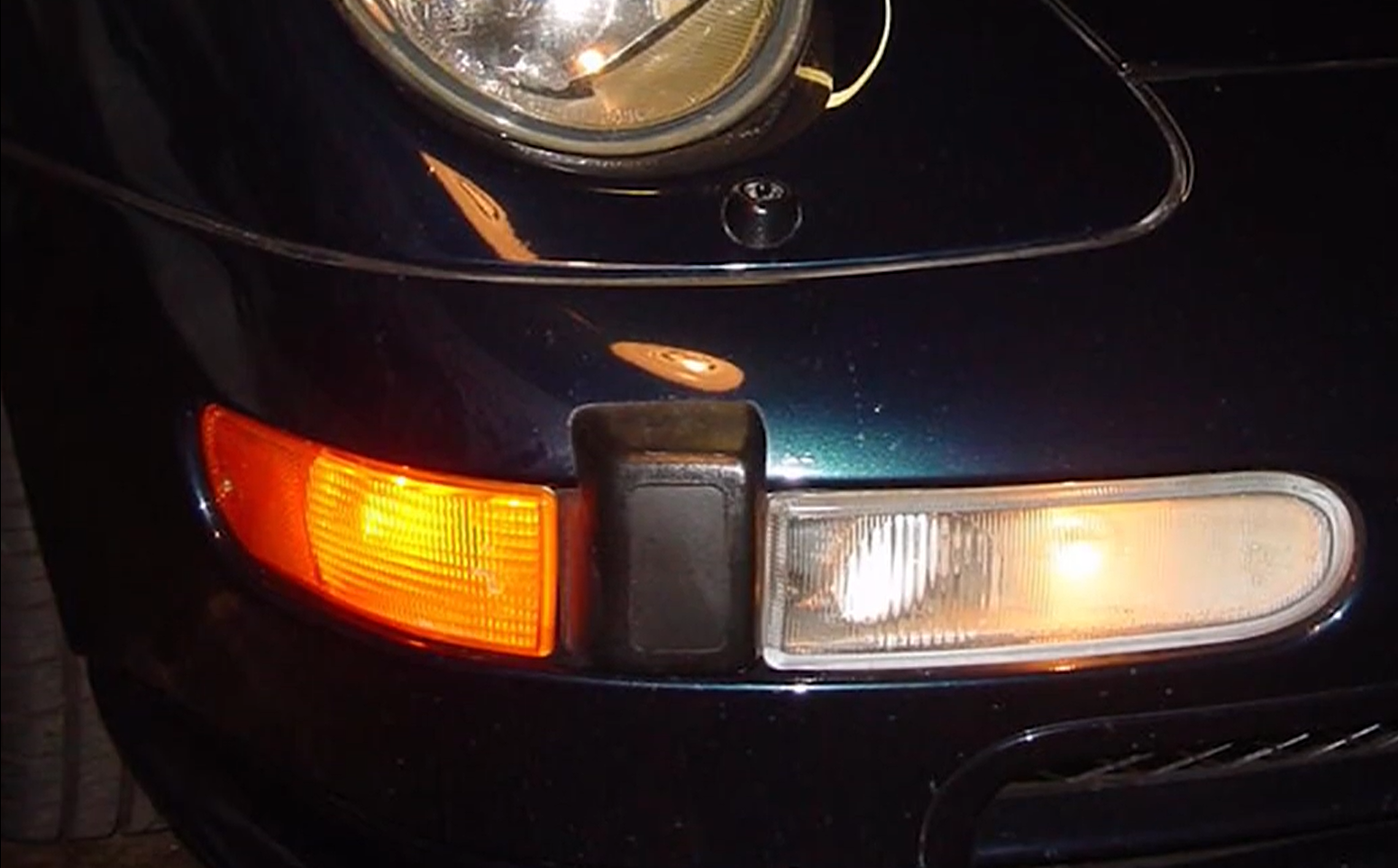
Parking Lights, also known as sidelights, are typically located in the front corners of your car’s headlamp unit. These lights make your vehicle visible to another driver when it’s not dark enough for your main headlights, but visibility still needs to be enhanced. They play a crucial role in ensuring that other drivers see your car in low-light conditions, such as at dusk or in heavy rain.

Hazard Warning Lights are essential for alerting other drivers to potential dangers or obstructions on the road. These lights, often activated by a switch on the dashboard, flash all the indicator lights simultaneously to signal an emergency or a stationary vehicle. It’s hard to miss. Simply look for a large triangle on your panel. They are handy in situations where your vehicle has broken down or when you need to warn others of a hazard ahead. Remember to use them responsibly.
Automatic Headlight Symbol (Auto Lights)
The automatic headlight symbol usually shows a headlamp with the letter “A”. This auto headlights symbol means the car controls the headlights automatically based on ambient light.
What is the symbol for automatic headlights?
The auto lights symbol turns headlights on or off without driver input, but drivers should still check their lights in rain or fog.
Headlight Maintenance and Safety
Importance of Proper Headlight Maintenance
Proper headlight maintenance is vital for your vehicle’s safety and visibility, especially during night driving or in adverse conditions like rain or snow. Regularly check that all lights, including headlights, low beam headlights, high beam headlights, fog lights, rear fog lights, brake lights, parking lights, and indicator lights, are functioning correctly. This ensures that your car remains visible to other drivers and pedestrians, reducing the risk of accidents.

To check your lights, use an indicator stalk or dash switch to cycle through each setting, including low beam mode, high beams, and fog lights. Don’t forget to check your hazard lights, which are often marked by a red triangle symbol on the dashboard, and your automatic headlights, if equipped.
If your high beam headlights or low beams seem misaligned, they could be angled too high and blind the oncoming traffic with glare.
This is not just an inconvenience but a potential danger. Consult your owner’s manual to re-aim the lights or seek professional help. Properly aimed headlights ensure maximum visibility without dazzling other road users.
Maintaining all your vehicle’s lights ensures that your car remains visible in low brightness or foggy conditions, enhancing safety for both you and other traffic on the road.
Common Headlight Issues and Solutions
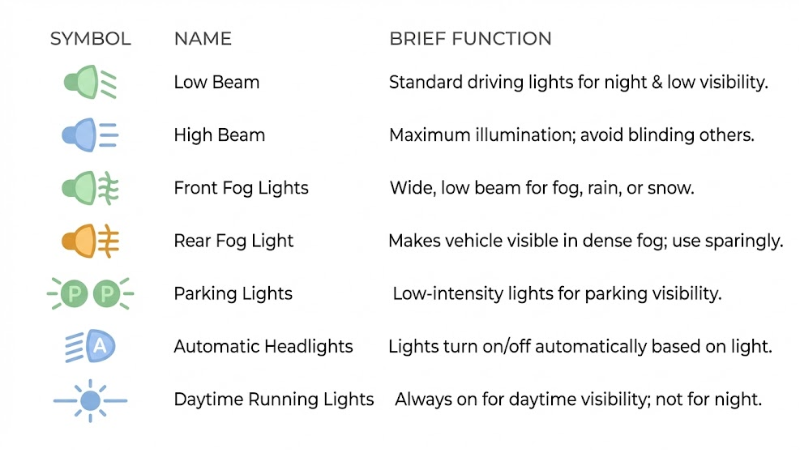
- If your check engine light is illuminated, it might signal an issue with your traction control system or other critical engine components. It’s essential to address this warning promptly, as it could affect the overall performance and safety of your vehicle.
- If your high beam headlights are not functioning, first check your owner’s manual for specific troubleshooting steps. This could involve inspecting the indicator stalk or dash switch that controls the high beams to ensure they are in the correct position. If the problem persists, check the wiring and battery connections to ensure everything is securely in place.
- If your low beam headlights are not working, start by examining the low beam mode setting. You may need to adjust the beam or replace the bulb. Sometimes, low beams can become misaligned, causing poor visibility or dazzling others. If alignment issues are present, consult the owner’s manual or visit a professional to adjust the lights properly.
- Regularly checking your headlights and addressing any issues promptly is crucial for maintaining safety and ensuring your vehicle is fully operational, especially in low brightness or adverse conditions like rain or fog.
Safe Night Driving with Proper Headlight Use

When visibility decreases to the point where you can’t see 500 to 1,000 feet ahead, it’s crucial to pull over and turn on your headlights. For most conditions, low beams should be your default setting, providing enough illumination without blinding oncoming traffic. Reserve high beams for straight, dark, and unlit roads, ensuring you push them back to low beams when you encounter other vehicles.
Activate your front fog lights to enhance safety in foggy conditions. These lights cut through fog and improve visibility close to the road, helping you navigate more safely. Parking lights and hazard warning lights should also be used correctly when you’re stationary in low-light conditions. Hazard lights should alert other drivers to potential dangers on the road.
Maintaining proper headlight use, including knowing when to activate front fog lights, ensures safer driving, whether you’re navigating through trucks on the highway or pulling up to a gas station.
Common Headlight Symbol Confusions
Many drivers misunderstand headlight symbols in a car, which can lead to poor visibility or glare.
- Headlights on symbol is on, but the road looks dark:
You may be using parking lights or daytime running lights instead of low beams. - High beam symbol appears unexpectedly:
The stalk may have been pushed forward accidentally. - Fog light symbol on in clear weather:
Fog lights should be turned off to avoid distracting other drivers.
Knowing what the car headlight symbols mean helps prevent these common mistakes.
Conclusion
Consult your owner’s manual for specific details on your vehicle’s headlight operation, including how to use features like low-beam and high-beam headlights, fog lights, and parking lights.
Each car may have unique settings and symbols, so familiarizing yourself with these can ensure you’re using your vehicle’s lighting systems correctly. Pay attention to the indicator light and make sure everything is in order.
Future-Proof Your Fleet Lighting—Get a Tailored Quote Now
If you’re looking for a bulb change or thinking of a system upgrade, get in touch with us! Our professionals will help you with anything related to car lights.
